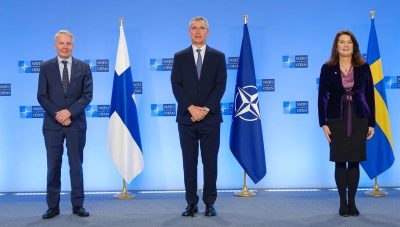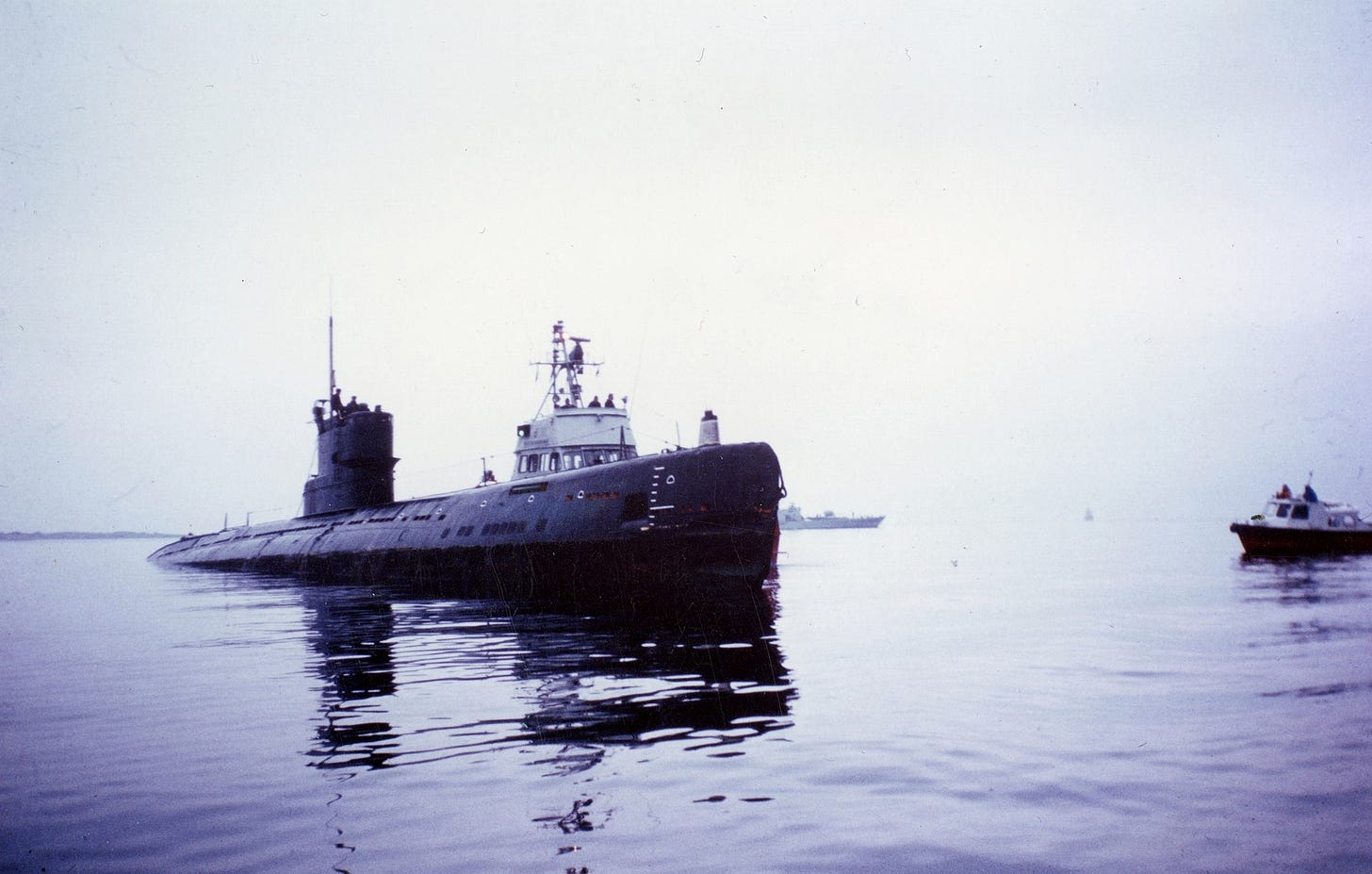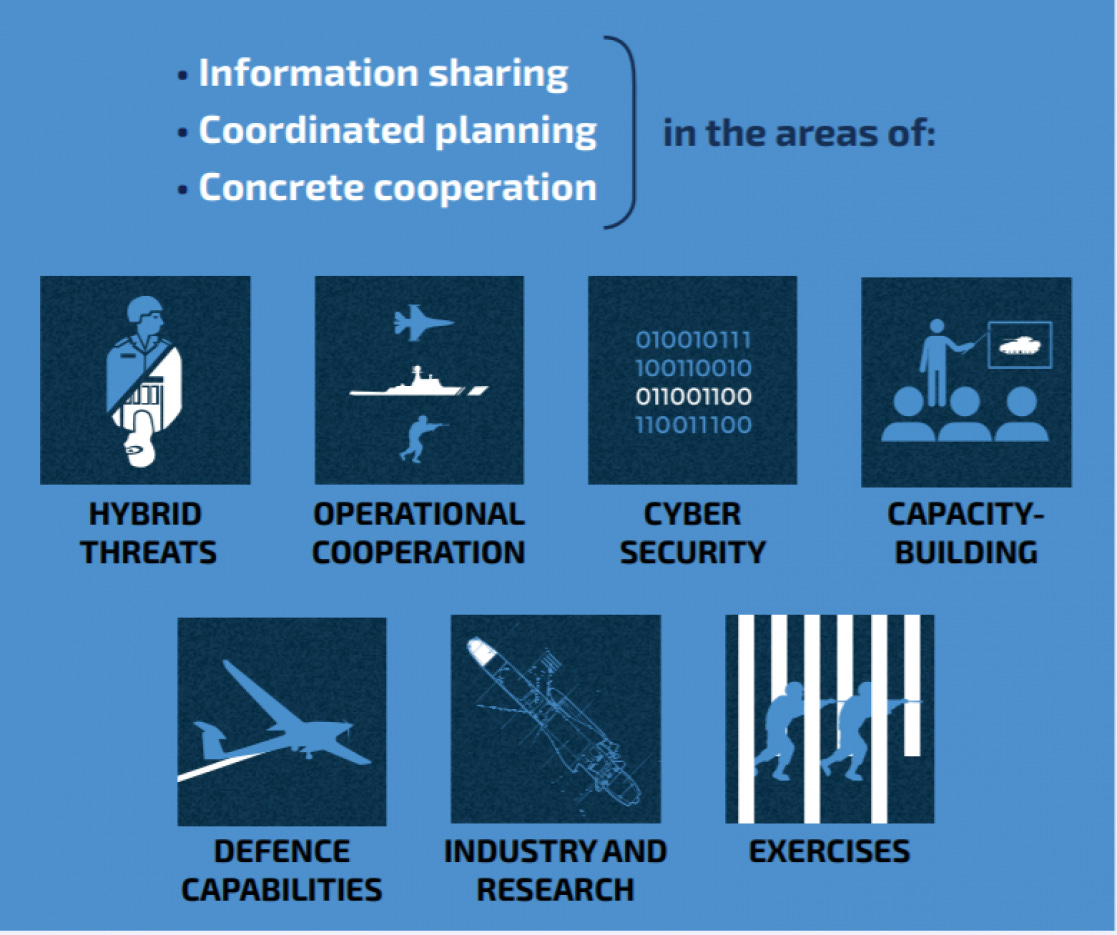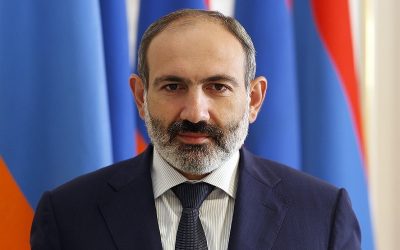The Historical Roots of Sweden’s Membership in NATO and its Future Implications

All Global Research articles can be read in 51 languages by activating the Translate Website button below the author’s name (only available in desktop version).
To receive Global Research’s Daily Newsletter (selected articles), click here.
Click the share button above to email/forward this article to your friends and colleagues. Follow us on Instagram and Twitter and subscribe to our Telegram Channel. Feel free to repost and share widely Global Research articles.
Big Tech’s Effort to Silence Truth-tellers: Global Research Online Referral Campaign
***
After the vote by the Hungarian parliament to approve the Swedish NATO membership on February 26th, my home country has now officially abandoned 200-years of non-alignment and neutrality.
How did this happen and what will be the consequences?
The last time Sweden was part of an alliance was during the Napoleonic Wars in the early 19th century, which led to the cession of Finland to Russia in 1809 and (as a way to compensate for this devastating loss) our final war campaign in 1814 that forced Norway to accept the Swedish–Norwegian Union (1815–1905).
This ended a long period of wars that Sweden had been involved in with its neighbours since the founding of the nation. Especially against the rival regional powers Denmark and Russia.
Whereas Denmark was defeated and lost all of their possessions on the Swedish mainland in 1658 and Norway in 1814, Russia had been too powerful an adversary.

The Battle of Poltava, 1709
Russia effectively ended the Swedish Empire with nations conquered during the Thirty Years’ War (1618–1648) and the looting of Prague’s treasures.
The turning point was the battle of Poltava in Ukraine 1709 during the Great Northern War (1700–1721).[1] It almost totally obliterated the once mighty and “unbeatable” Swedish army and eventually led to Sweden’s loss of Vyborg, Estonia, Livonia, and Ingria in 1721.[2]
Russia did thereby gain access to the Baltic Sea, and built their new imperial capital St Petersburg near the place of the former Swedish fortress and city Nyen.
The peace treaty of Nystad marked the birth of the Russian Empire.
Twenty years later, Sweden was tricked and lured into attacking Russia as part of an insidious plan to install Peter the Great’s daughter Elizaveta Petrova on the Russian throne.
The offered reward was the return of territory lost in the Great Nordic War. Behind the plan was the French diplomat Jacques-Joachim Trotti and Elizavetas advisor French-German physician Count Jean Armand de Lestocq who had approached the Swedish diplomat in S:t Petersburg. Both Trotti and Lestocq sought to dominate Russian state affairs behind the scenes with the aid from France. Lestocq received a pension of 15,000 livres from the French King Louis XV and continued to incite intrigues and conspiracies at the court.[3] These intriguers were clearly not to be trusted.
Jean Armand de Lestocq, Jacques-Joachim Trotti and Elizabeth of Russia
As soon as the coup d’état had succeeded the promise was broken and instead the Russian army defeated the poorly trained Swedish army and occupied Finland. Sweden had to cede even more territory in the humiliating peace treaty that followed. As if this land loss wasn’t enough, Russia was given the right to interfere in Swedish foreign policy and came to decide that the tsarina’s relative Adolf Frederick would be appointed as Swedish Crown Prince (to ensure a friendly relationship between the nations). Sweden thus ended up as a vassal state.
Russian troops were even sent to Swedish cities for “protection” against a feared Danish invasion and the insurrection that had followed in the wake of the disastrous war. My own hometown Norrköping had to welcome Russian soldiers and give them accommodation. This was only 24 years after Russian troops ravaged the city and burnt it to the ground during the end of the Great Nordic War. This opened up scars that only recently had begun to heal.[4]
The son of Adolf Frederick, Gustavus III, planned a revenge and started another war against Russia in 1788 to win back lost territory and put and end to Russian interference in Swedish internal affairs. Despite Sweden’s largest naval victory ever (at the battle of Svensksund), the war ended with a status quo, with no land gains or losses, but Russia now lost its right to interfere. This, however, would soon change during the Napoleonic Wars.
Sweden, with King Gustavus IV on the throne, was a part of the British-led alliance against Napoleon and refused to participate in the blockade (continental system) against Great Britain. This was not tolerated by Napoleon. During the peace conference in Tilsit 1807, Napoleon made a secret agreement with Tsar Alexander to attack Sweden from the east, whereas the Danes were supposed to attack from the south. The Danes had no success but the Russian war campaign resulted in the permanent loss of the eastern part of the Swedish territory.
This was a prize too high to pay, and led to a coup d’état against the stubborn King Gustavus IV.
Sweden also had to comply with the French demands and declare war on Great Britain. Three years later, the French army met its tragic fate in Russia despite Napoleon’s meticulous preparedness, with lessons learned from Charles XIIs failed campaign in 1709. This changed circumstances.
Sweden again became part of the alliance (together with Russia) against France and asked the former French commander, Jean-Baptiste Bernadotte, to be the new Crown Prince of Sweden. It was expected that he would reconquer Finland but instead he decided to go for the much easier military target, Norway.
It was probably a wise decision as the war campaigns against Russia had been too disastrous and another war with the the Great Bear could result in even more severe blows to the war-torn and almost bankrupt kingdom. The Russian Empire even supported Sweden’s claims of dominion over Norway, which was ceded to Sweden from Denmark in accordance with the peace treaty in Kiel in 1814.
The Norwegians themselves were not very enthusiastic about this and instead wanted to regain their sovereignty but, after a short military campaign, had to accept the Swedish king Charles XIV John as their Head of State. (The Swedish–Norwegian Union lasted until 1905 when Norway became independent.)
In 1815, Sweden chose the policy of non-alignment during peacetime and neutrality in times of war, and would during the next 200 years shift position from one of Europe’s poorest countries to one of its wealthiest. Staying out of war was clearly good for business.
Selling weapons to other countries was more profitable than participating.
The famous Swedish neutrality policy has, however, been disputed. Especially during World War II, with the Swedish concessions towards Nazi Germany (permitting transit of German troops through Sweden). Swedish sales of iron ore and ball bearings probably prolonged the war.[5]
During the Cold War, it was also clear that the Soviet Union was our prime enemy. All our defences were designed to manage a threat from the East. At this time, Sweden secretly developed a close military cooperation with USA and NATO for protection. In 1952, an agreement was signed that gave NATO the right to use Swedish military bases if needed. In exchange, Sweden got fuel, cannons, and ammunition.[6]
State propaganda, however, told another story: Sweden was a peace-loving country that cared for the third world and only sold “friendly” weapons to countries that didn’t engage in war. In reality, it was easy to circumvent these self-imposed rules by selling to a third party nation.

In 1981 a Russian submarine got stranded in the Swedish archipelago, followed by the Hårsfjärden incident in 1982.[7] These events created a national hysteria, with a wave of false alarms about submarine activity in the calmest of waters. The fear of Russian aggression was at its peak and Swedish media helped whip up a frenzy. When I did my military service in the late 1980s, it was obvious who was our enemy. This was soon to change. I finished my military service in April 1989 and only seven months later the Berlin Wall fell.
With the unexpected and sudden fall of the Soviet Empire, the old enemy evaporated like smoke.
A new unipolar order was born. Our national defences were dismantled and kept to a minimum during the 1990s and early 2000s. National preparedness for a nearby conflict was discontinued and emergency stocks of basic supplies and fuel were emptied (and sold when oil prices were at a historical low). Conscription was abolished as late as in 2010.
The door to Sweden was swung wide open. It was clear that we would not be able to defend ourselves for more than a few days if attacked by Russia.
But other things were going on in the background. An even bigger fish was preparing to swallow our unguarded little nation.
In 1994, Sweden became a member of NATOs “Partnership for Peace”. This could be seen as the first step in becoming a member of the alliance.
When Sweden became a member of the European Union in 1995, this meant that Sweden in effect abandoned its neutrality principle. In 1999, the European Union adopted the European Security and Defence Policy and in 2009, the Common Security and Defence Policy.[8] According to this policy, it is NATO that is responsible for securing the borders of the Union! The cooperation between EU and NATO goes back to the “Berlin Plus agreement” in 2002.[9]
In 2016, the EU and NATO signed a formal partnership with seven concrete areas of cooperation.[10]

In July 2018, a second Joint Declaration was signed in Brussels that called for a “swift and demonstrable progress in implementation”. EU and NATO cooperation became “the established norm”.
None of these agreements were mentioned in the press or public debate. The Swedish government didn’t care to inform the public, as this agenda probably wouldn’t have gained enough public support at that time. But a convenient trigger event would soon change these circumstances and rally the masses in support for NATO.
On January 24th, 2022, a meeting was arranged between NATO Secretary General Jens Stoltenberg and the Finnish and Swedish Foreign Ministers Pekka Haavisto and Ann Linde at the NATO headquarters in Brussels. NATO had an offer:
NATO’s door remains open. While NATO cooperates closely with Finland and Sweden, we fully respect your strong and independent security policies. It is for Finland and Sweden alone to decide on your path. Not Russia. Not anyone else. Sovereign nations have the right to self-determination.[11]
They clearly had full knowledge of things to come. Exactly one month later, Russia started its “special operation“ against Ukraine.
Sweden and Finland could now jointly apply for NATO-membership in May, with a majority support from their respective populations. The European Union also got a chance to display a united front against the Russian aggression.
Without a moment’s hesitation, the Swedish government started sending weapons to Ukraine.[12] This can be interpreted as a late revenge for the military defeat in Poltava in 1709, the broken promises from 1741, and the disastrous loss of Finland in 1809.
The Swedish military support has since included “artillery ammunition, an anti-aircraft system, light anti-tank weapons, recoilless rifles, hand grenades, medical equipment, medical transport vehicles, food, and financial support” at a value of 30 billion SEK.[13]
This is the first time (at least officially) since the Finnish Winter War against Russia in 1939–40 that Sweden has sent large shipments of weapons directly to one of the parties in an armed conflict.[14]
This has also offered fantastic business opportunities for the Swedish arms industry (the Wallenberg-controlled SAAB Group, and the British-owned BAE Systems AB, previously Bofors, the crown jewel of the Swedish arms industry) which not only supplies weapons for the war in Ukraine, but also the rearmament of the Swedish military forces.
War is good for business. The profits and stock value of weapons producing companies have soared.[15] All with a little help from our tax payer money, while at the same time we see cutbacks in healthcare, social services, and education.[16]
In December 2023, Sweden signed a special agreement for US military forces to operate in Sweden This gives US the right to use 17 of our military bases.[17]
The process of Sweden becoming a full NATO member, through approval by NATO member state parliaments, has met with some obstacles. Turkey and Hungary have delayed approval for almost two years but eventually got what they wanted from the Swedish goody bag (terror classification of some Kurdish organisations, and a couple of fighter jets, respectively), and finally gave their approval.
Some questions need to be asked.
Will the NATO-membership be the saviour that it has been portrayed as in the propaganda or will Swedish military bases become launching pads for a major conflict in the quest for world domination? A new Napoleonic War?
Russia will now strengthen its defences on the Western border. This will again gain the arms industry. It is now time to stock up supplies and tidy up our bomb shelters. The Swedish Commander-in-Chief recently urged us to prepare for war.[18]
Vladimir Putin recently said, with a nod to Sweden, France, and Germany:
We remember the fate for all of those who once sent their troops to our country’s territory. But the consequences for an eventual involvement will now be much more tragic.[19]
The swift response from Russia was a poo attack on the Swedish embassy in Moscow.[20]
While all eyes are on the conflict in the East, negotiations and preparations are underway for the UN Summit of the Future and the Pact for the Future.[21]
This is what the members of G20, including United States, European Union and the Russian Federation, are working on.[22] A new technocratic global order.
- The League of Nations was created after the First World War.
- The United Nations was created after the Second World War.
- So what will transpire out of the third?
As the Carnegie Endowment of International Peace concluded at the beginning of the 20th century: there is no more effective method than war to change a society.
The same measures can also be applied in the west as in the east.
A digital world brain with an all-seeing eye (AI) rises out of the ashes of the old crumbling order.
*
Note to readers: Please click the share button above. Follow us on Instagram and Twitter and subscribe to our Telegram Channel. Feel free to repost and share widely Global Research articles.
Notes
[1] www.britannica.com/event/Battle-of-Poltava
[2] histdoc.net/nystad/nystad_title.html
[3] en.wikipedia.org/wiki/Jean_Armand_de_Lestocq
[4] norrkopingprojekt.wordpress.com/historia/krigsar/sallsamt-gastspel-1743/
[5] www.regeringen.se/rattsliga-dokument/statens-offentliga-utredningar/1999/03/sou-199920/
[6] popularhistoria.se/sveriges-historia/1900-tal/sa-blev-sverige-en-del-av-nato
[7] kkrva.se/wp-content/uploads/Artiklar/103/kkrvaht_3_2010_6.pdf
[8] www.europarl.europa.eu/factsheets/en/sheet/159/common-security-and-defence-polics
[9] www.nato.int/cps/en/natolive/official_texts_19544.htm
[10] www.eeas.europa.eu/eeas/eu-nato-cooperation-factsheets_en
[11] www.nato.int/cps/en/natohq/news_191037.htm
[12] www.government.se/government-policy/swedens-support-to-ukraine/military-support-to-ukraine/
[13] www.government.se/press-releases/2024/02/government-presents-largest-military-support-package-to-ukraine-to-date/
[14] www.svt.se/nyheter/inrikes/inte-sedan-finska-vinterkriget-har-sverige-skickat-vapen-till-en-krigszon
[15] www.ft.com/content/001d2e1c-8e59-444b-a07b-9a62be620431
[16] lakartidningen.se/aktuellt/nyheter/2023/12/stora-neddragningar-vantar-2024-trots-minusbudgetar
[17] www.government.se/contentassets/fa069c4f33504103ab4b5e635f947a34/agreement-on-defense-cooperation-between-sweden-and-the-united-states-of-america.pdf
[18] www.svt.se/nyheter/inrikes/darfor-varnar-svenska-regeringen-och-ob-for-krig
[19] tv.aftonbladet.se/video/366618/putins-ord-om-sverige-vi-maste-foerstaerka-graensen
[20] tv.aftonbladet.se/video/366642/bajsattack-mot-svenka-ambassaden-i-ryssland
[21] www.un.org/en/summit-of-the-future
[22] www.g20.org/en
All images in this article are from the author




